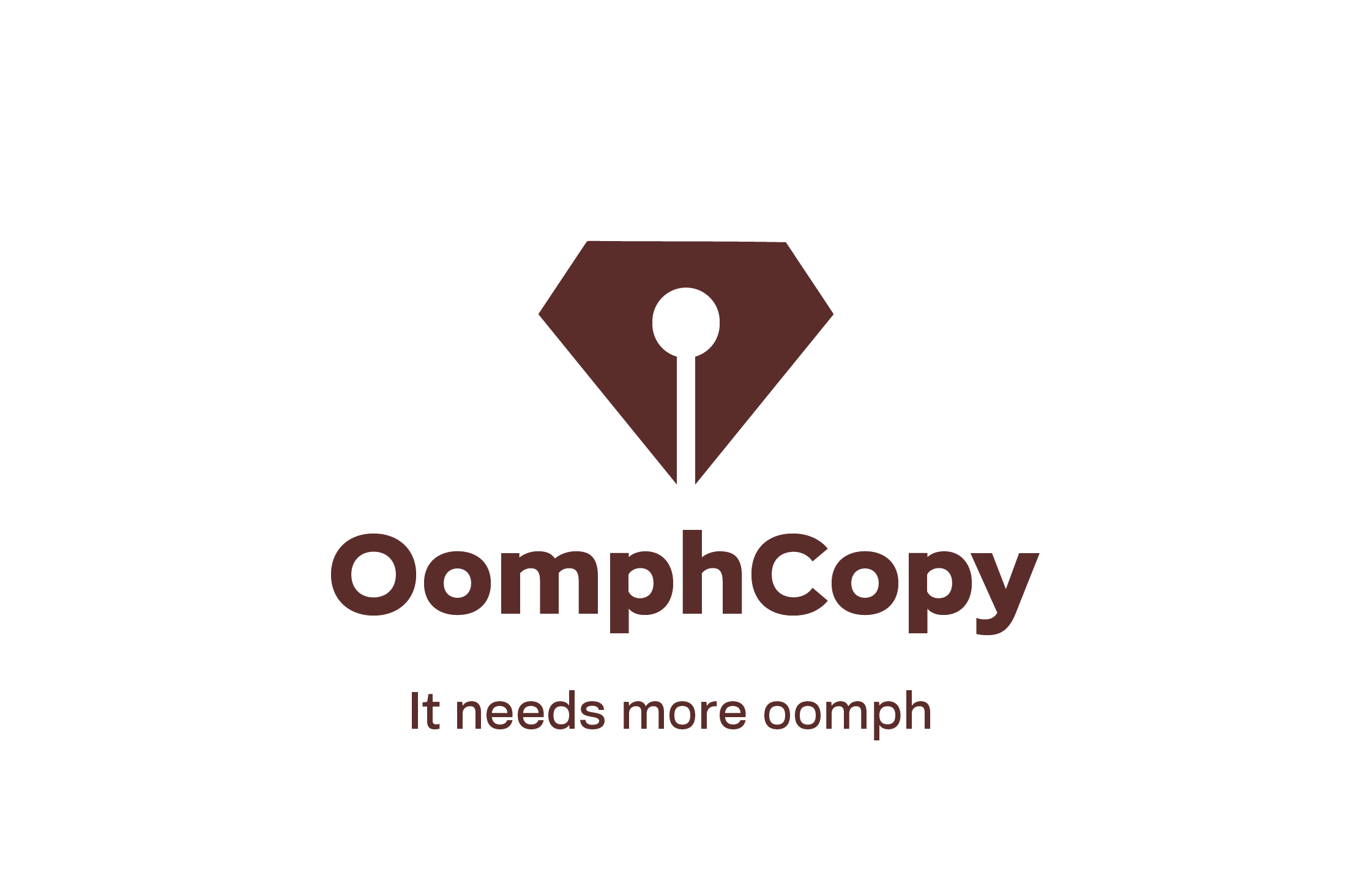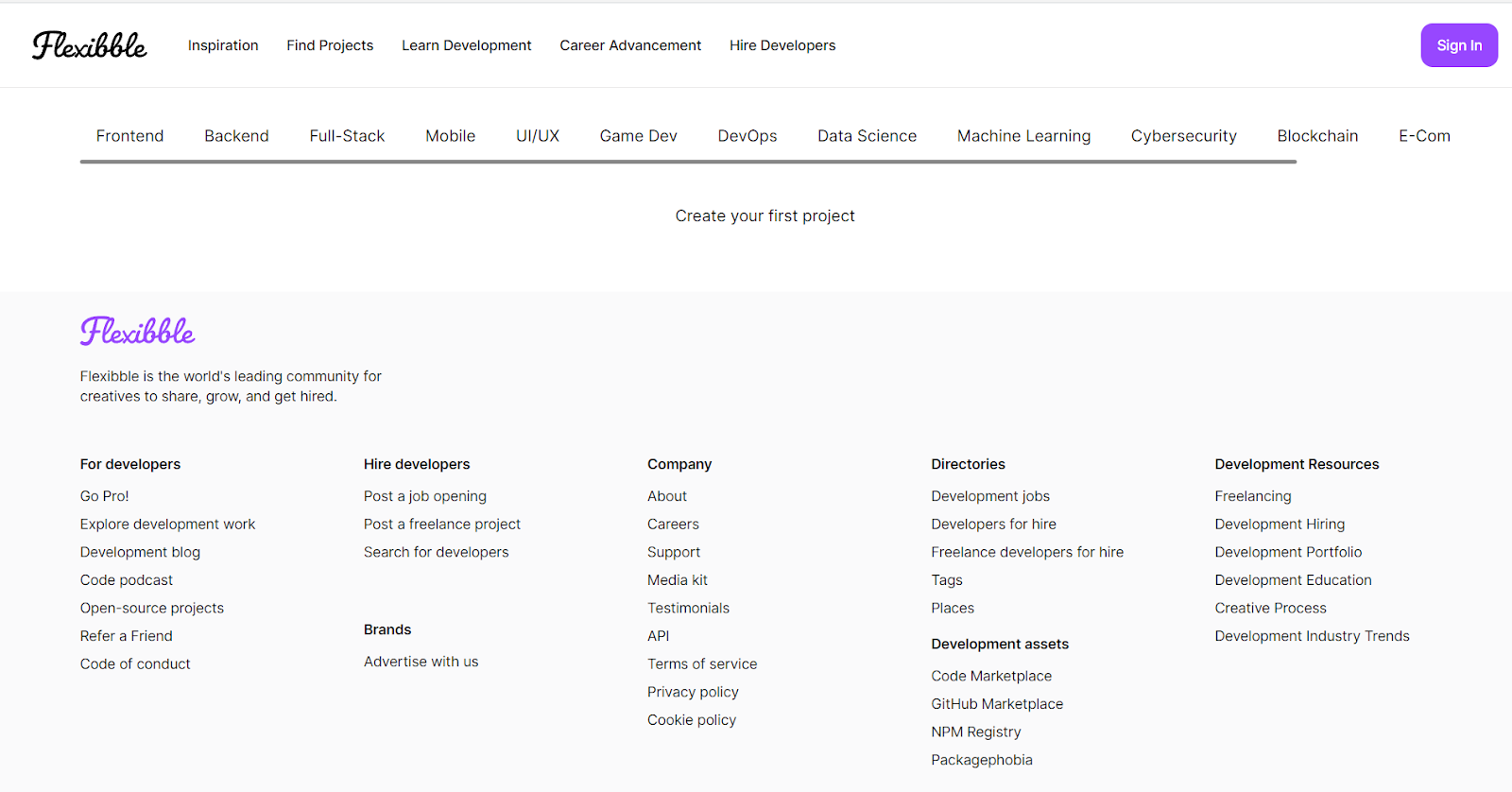Importance of Customer Research: The anxious customer and the birds with eleven beaks
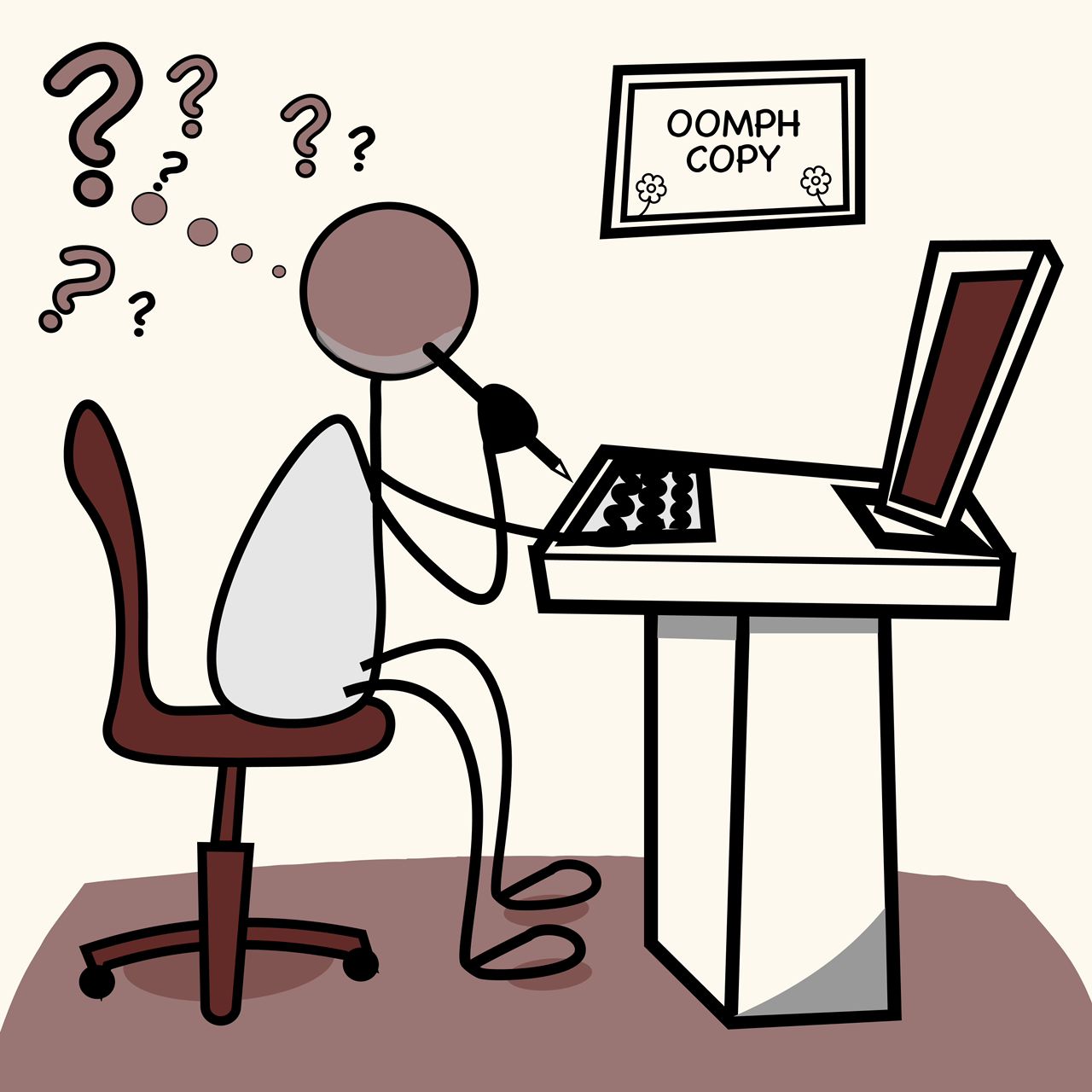
I’ve had a few people tell me…
“Everything is already done. Just fill up the space with words, and we’ll be on our way.”
“Pffft, it doesn’t take that long to write copy. I’m setting a 24-hour timer, go! Giddy-up!”
“I can do it with my eyes closed.”
Obviously, I’m exaggerating, but you get my point. It’s always a face-palm moment for me when I hear problematic words like these. Without falling into a wormhole of hurt feelings, I ask.
“Is the site a brochure or a sales tool?”
“Of course, we’re trying to generate leads and customers,” they reply
“Then it’s a horrible strategy for me to ‘just write some words’. I’d need to conduct research.”
If you want customers to feel dead inside and, frankly, annoyed that you wasted the 6 seconds they could have used to browse cat videos on TikTok because the random words you pulled from the ‘internet sky’ don’t resonate with them, then ignore what I’m saying.
But if you want a gut reaction,
An “Ooh, that hit me good in the feels,”
A “Wait, how did you know I needed that?”
or even
An “Eavesdropper in my mind? Subconscious brain, is that you?”,
You need research, and you need HiGh-QuALitY ReSeArCh. You need to *gasp* actually talk to or interact with your customers. That leads me to the kernel of my ‘Ted Write’: Writing great website copy, or any copy for that matter, requires more research than writing. Good copy is, in effect, good customer research.
Company Copy without Company research = Company Encyclopedia
You can almost tell when a company hasn’t conducted a sliver of research its customers or completely ignored customer research when their copy.
There’s always a hint of widespread “our”, “we”, “we’ve been……” corporate gobbledegook in their copy with little or no mention of customer pain points or desires (emphasis on customer).
It’s not wrong to write about yourself in, for example, your website copy. It would help conversions if you talked more about your customers, assuming the goal of your copy is to generate leads and customers (I’m just saying). And what better way to talk more about your customers than to use their own words?

Research conducted by Co-Schedule
Copy Converts When it Contains Voice of Customer (VoC)
If your copy is the car, 🚗Your VOC is the engine⚙️
Someone asked me one time, “How will you know the copy you’re writing is what customers want to hear?”
I replied, “I know because they told me”.
What makes copy highly likely to convert? Voice-of-customer data (obtained from customer research) and other useful data woven into existence with frameworks, formulas, and proven persuasion techniques.
Copywriting is sometimes funny to me. It’s literally taking your customers’ words and throwing a refined version back at them.
You rarely invent anything. You just go to your customer and say, “Hey, customer, what do you like?”
Then your customer replies with, “I like birds with eleven beaks.”
Then you ask, “Why do you like them? What do they help you achieve? What transformation do you get with birds with eleven beaks?”
Then they tell you, “Birds with eleven beaks help me sleep better at night. I find it hard to go to bed at night because I have an irrational fear of someone jumping me. These feathery creatures melt my worries with their melodious tunes. Before I know it, I’m completely knocked out.”
Then you address these painpoints and desires in your copy.
“Melodious tunes for an anxious heart.”
“Feathery friends for a lonely night.”
“A bird in hand is worth two melatonin pills.”
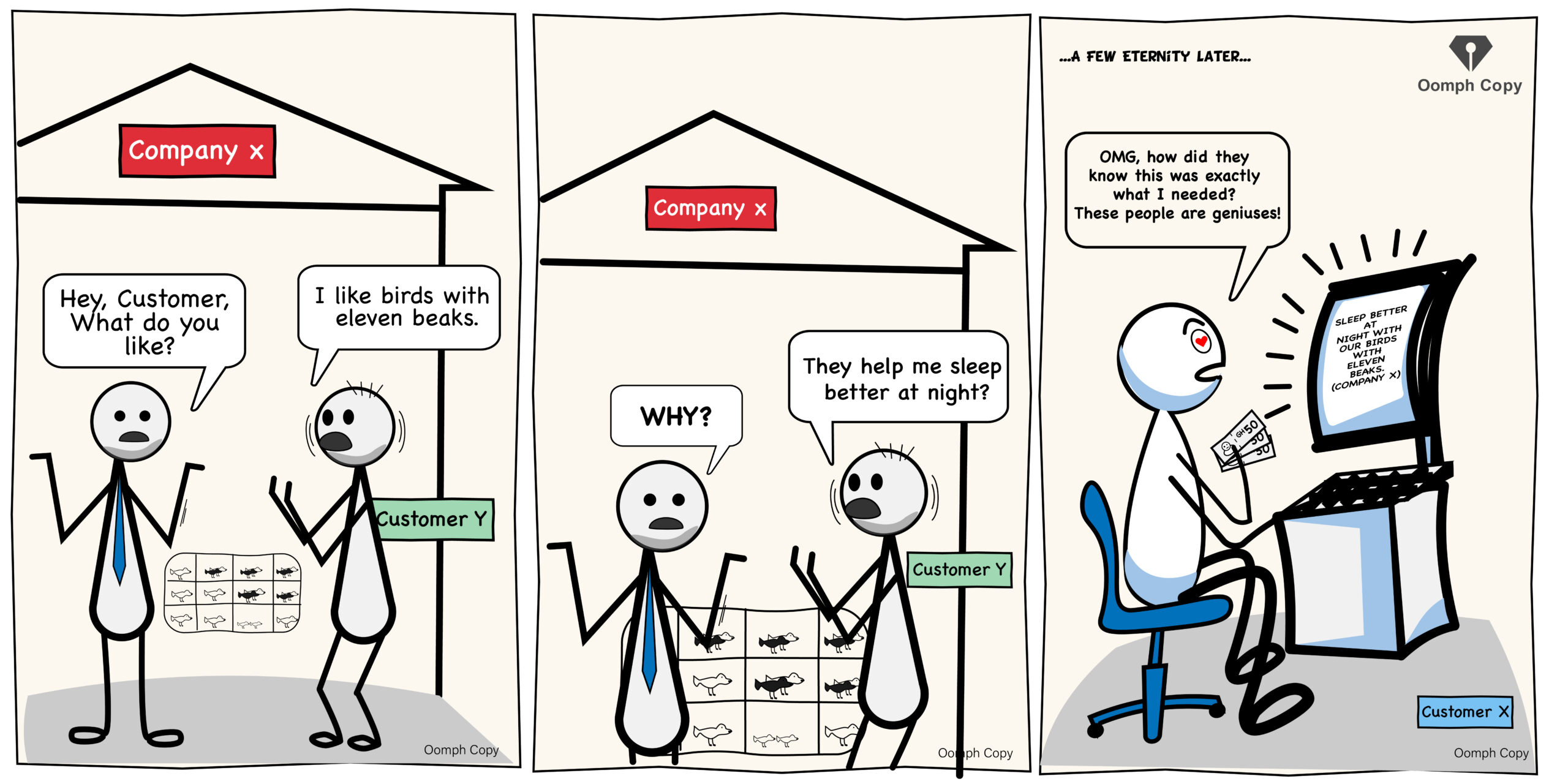
Simple! You barely invented anything. You just took what they said, modified it a bit, and threw it back at them. Success!
Copy writes itself. You just have to get out of the way and let it do its thing.
It’s like a 2-person relay race that always starts with the customer. The customer gives you the baton, and you head towards the finish line. The customer converts only when you’ve successfully crossed the finish line with the exact baton (color, size, material, and everything) the customer gave you in your hand.
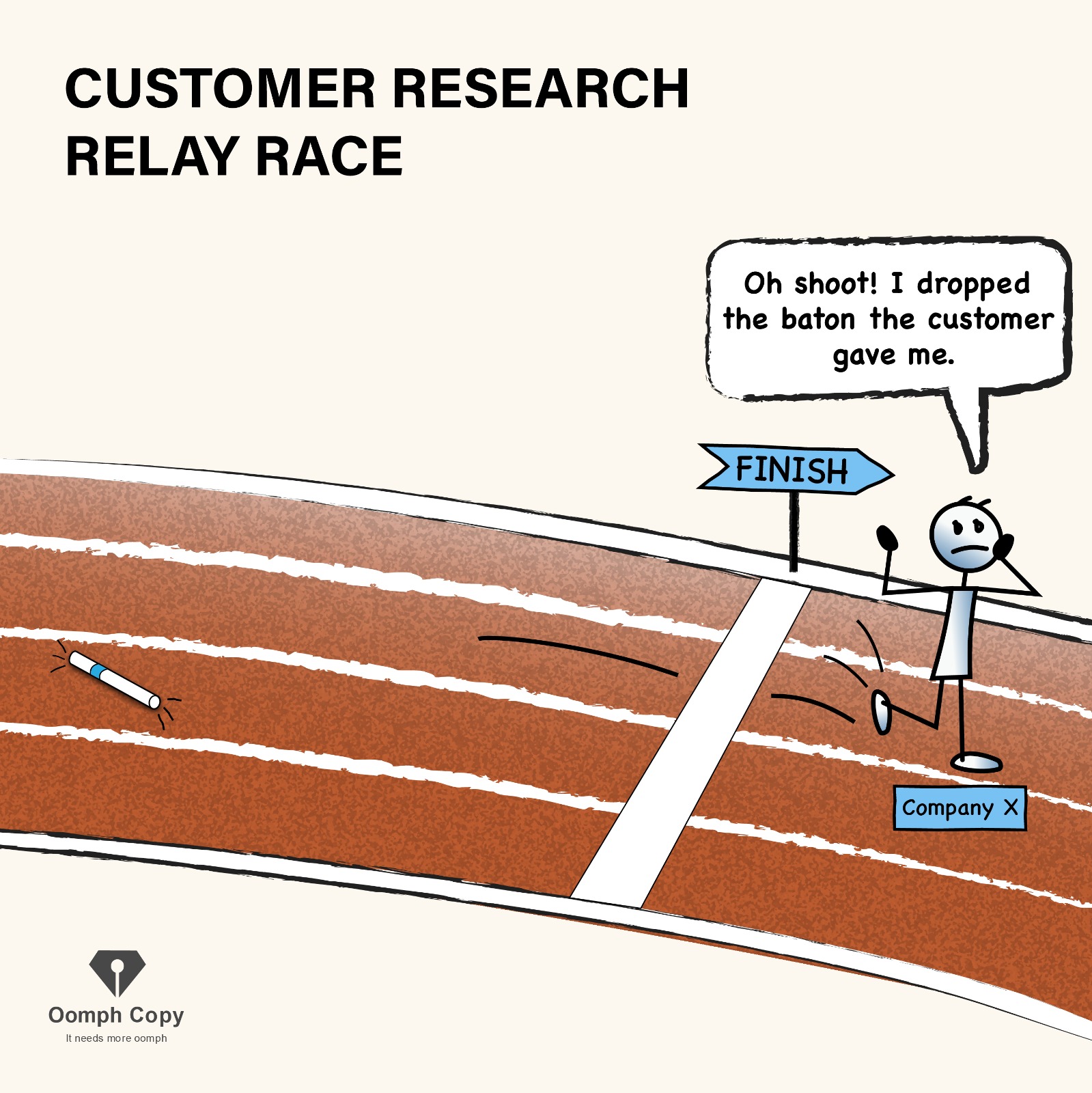
The Research Principle
Researching your customer and finding your competitive advantage is where customer conversion resides. It can solve about 70% of your messaging issues. Talking to your customers and learning everything you can about them will never go out of style. Read that again. Don’t write your copy based on assumptions. Or, you know, fiction is good too.
More Reading on Conducting Customer Research
There’s a lot to be said about customer research. Knowing how to conduct customer research to find your VoC gold is a logical next step if you’re not familiar with the process. I’ve put together some great resources on the various ways to research customers.
Customer Interviews
The number one source of VOC is talking to the customers themselves. Nothing beats talking to your actual customers.
Resources:
Surveys
Customer interviews are great, but surveys are helpful when you’re pressed for time or find it hard to reach busy customers.
Resources:
How to create customer surveys: 8 tips and examples
Learning from customers (qualitative research)
Tools:
Forums
Like a detective, you can observe conversations that your audience is having about you and your competitors from the shadows. Quora and Reddit are great platforms for this kind of research.
Review Mining
Reviews on places like G2, Capterra (if you’re in SaaS), and Amazon help you understand what your customers are thinking.
How to understand your customers when you’ve got limited time and budget
How Companies Can Mine Online Reviews for Product-Development Gold
Heat Maps
Heatmaps provide insights into the behavior and interactions of your customers on your website. Heat map patterns help you understand what users are focusing on and why, where on the page they spend the most time and where they are dropping off, and why?
What are heat maps? A guide to heat maps and how to use them
Heatmaps 101: Using Website Heatmaps to Analyze Your Site (+ Common Errors to Avoid)
Tools:
Competitor Analysis
Don’t copy your competitors; Learn from them. What is working for them? What’s NOT working for them? Where can you improve, and what can you use as leverage?
Copying your competitors’ copy verbatim is not a good long-term strategy. Yours is to gauge the market and make an informed decision on how to stand out in your messaging. What are people currently doing, and how can I do something else?
Resources:
What Is a Competitor Analysis & How to Do It (with Template)
What’s a Competitive Analysis & How Do You Conduct One?
What are heat maps? A guide to heat maps and how to use them
Heatmaps 101: Using Website Heatmaps to Analyze Your Site (+ Common Errors to Avoid)
Tools:

Esther Kumi
Esther is a copywriter and strategist for B2B SaaS and Tech companies. She has a bachelor's degree in Mechanical Engineering and previously worked as a Junior Backend Developer and Technical Writer. When she's not writing copy, she's either writing screenplays, watching YouTube videos, or writing silly dad jokes.
